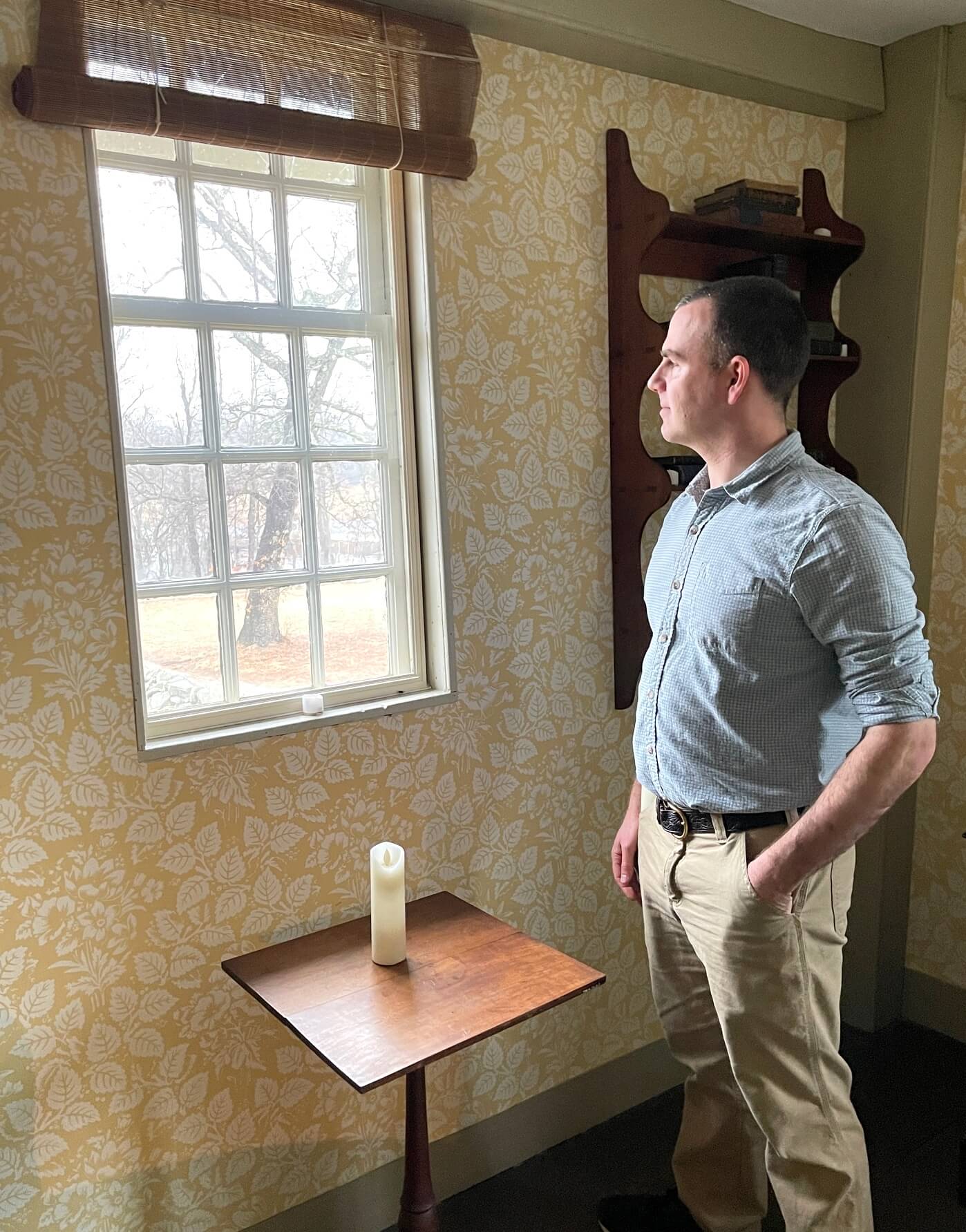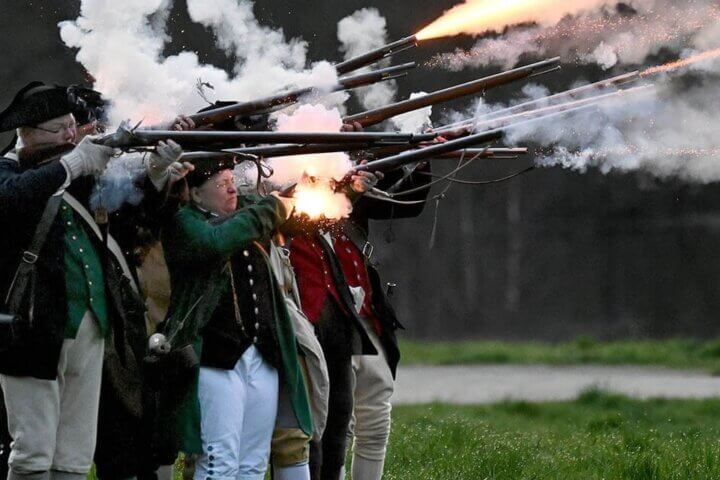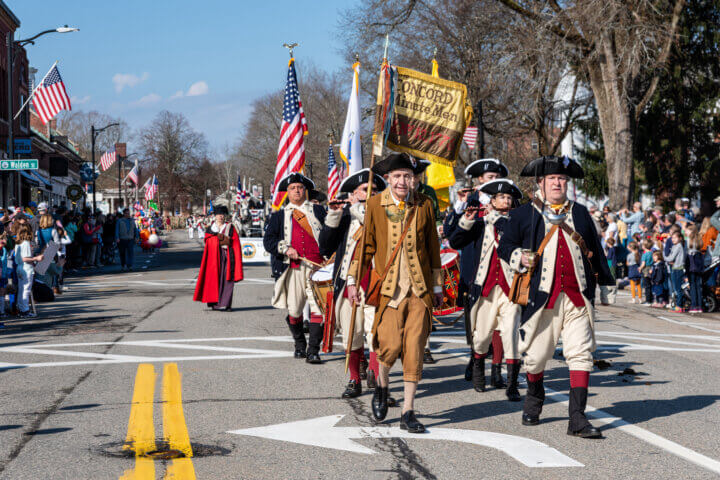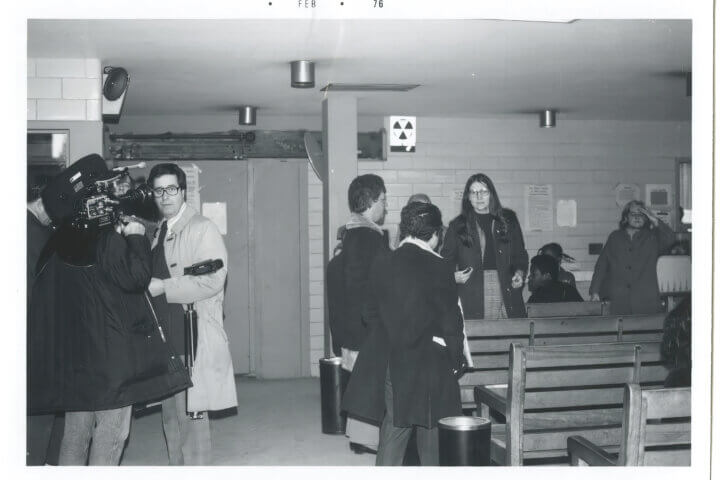By Laurie O’Neill
Correspondent
Ah, love.
Whether it be romantic or between friends, the love of parents for their children or the pain of lost love, the subject never fails to engage and enchant.
Did you know The Old Manse — the 1769 Georgian clapboard structure on the banks of the Concord River, which housed esteemed writers and thinkers and bore witness to events that shaped America’s history — contains many stories of found and lost love?
“When you look at all of the different ways that love took shape in The Old Manse, it can be said that this was what turned the house into a home,” says Steve Schroth, education manager at the museum.
The Old Manse, so named by 19th century resident Nathaniel Hawthorne, is known for its role in the American literary movement and its location overlooking the Old North Bridge: 18th century residents watched the battle from the upstairs windows, there for “the shot heard ‘round the world.”
Hawthorne and his new bride, Sophia, moved into the house as renters on their wedding day in 1842. They called their stay “three years in Eden” and left their mark, literally: Hawthorne wrote “Mosses from the Old Manse” in a room upstairs, and visitors can see messages Sophia etched into some of the windows with her engagement ring.
One, recorded on an icy winter day, is a fond note about their daughter: “Una Hawthorne stood on this window sill January 22nd, 1845, while the trees were all glass chandeliers — a goodly show which she liked much tho only ten months old.”
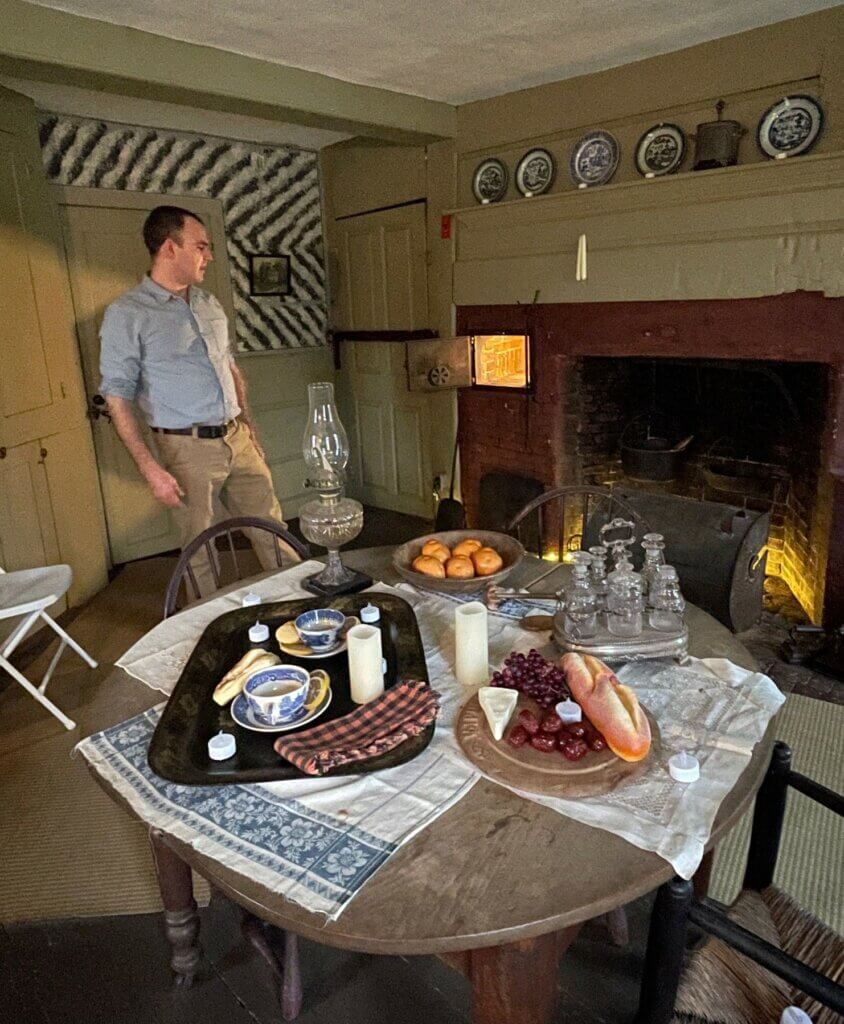
The Hawthornes shared a journal for the first year of their marriage, with one writing in the morning and the other at night, and on their first anniversary, they penned love letters to each other.
In prose brimming with romance, he wrote to her, “We were never so happy as now — never such wide capacity for happiness, yet overflowing with all that the day and every month brings to us….”
Sophia responds in kind: “Then we had visions & dreamed of Paradise. Now Paradise is here [and] our fairest visions stand realized before us.”
Hawthorne, Ralph Waldo Emerson, who lived in the Old Manse from 1834-1835, and Henry David Thoreau, a frequent visitor there, were close friends who helped spawn a philosophical revolution in Concord.
In his poem about friendship, Thoreau writes of “Two sturdy oaks I mean, which side by side/Withstand the winter’s storm/…Their roots are “intertwined/Insep’rably.” On the occasion of the Hawthornes’ wedding, Thoreau surprised the newlyweds by creating an heirloom vegetable garden at the Manse which has since been recreated and tended.
Emerson composed a poem to his beloved wife, Lidian, after her death. Having viewed a splendid rhododendron in the woods, he wrote these lines: “Tell them, dear, that, if eyes were made for seeing,/Then beauty is its own excuse for Being.”
The Old Manse at 269 Monument Street is holding a special event called “Romance at the Manse: Stories of Love and Friendship” on February 9 and 10. Guides are offering 45-minute “candlelight” tours every half hour from 5:30 to 7:30 p.m. The tours will include readings of poems and letters by inhabitants of the Manse and their guests to help visitors learn about the many ways friendship and love were part of the history of the house.
Tickets are $20 for adults and $12 for Trustees of Reservations members. To check if there is still space, call (978) 221-4829 between 9 a.m. and 5 p.m. After the tour, visitors can enjoy chocolate treats by a fire outside. Note: This tour involves walking through a home with uneven floors in low light.
The Old Manse also offers regular tours of the house on winter weekends. Visitors should enter through the bookshop.


